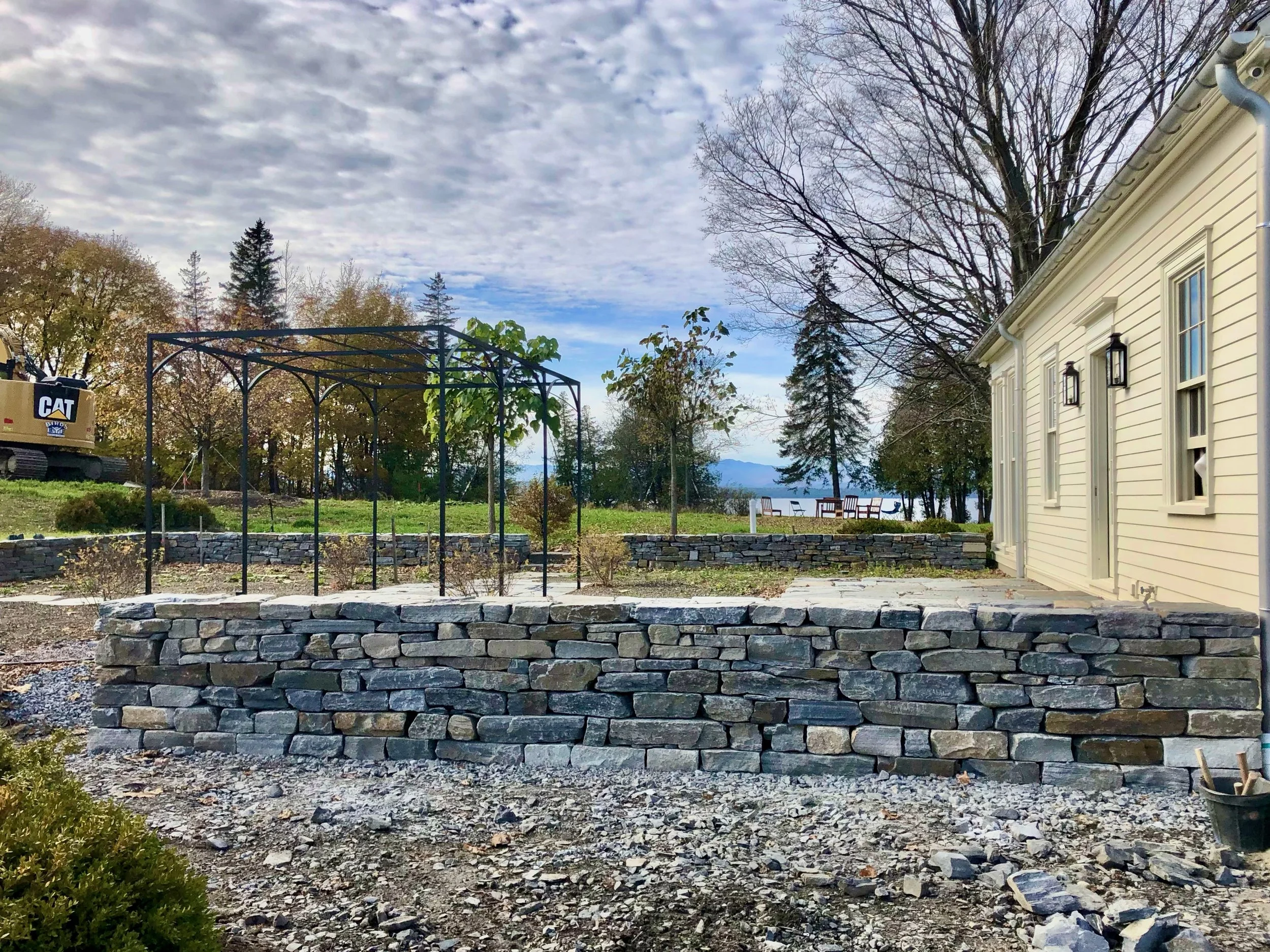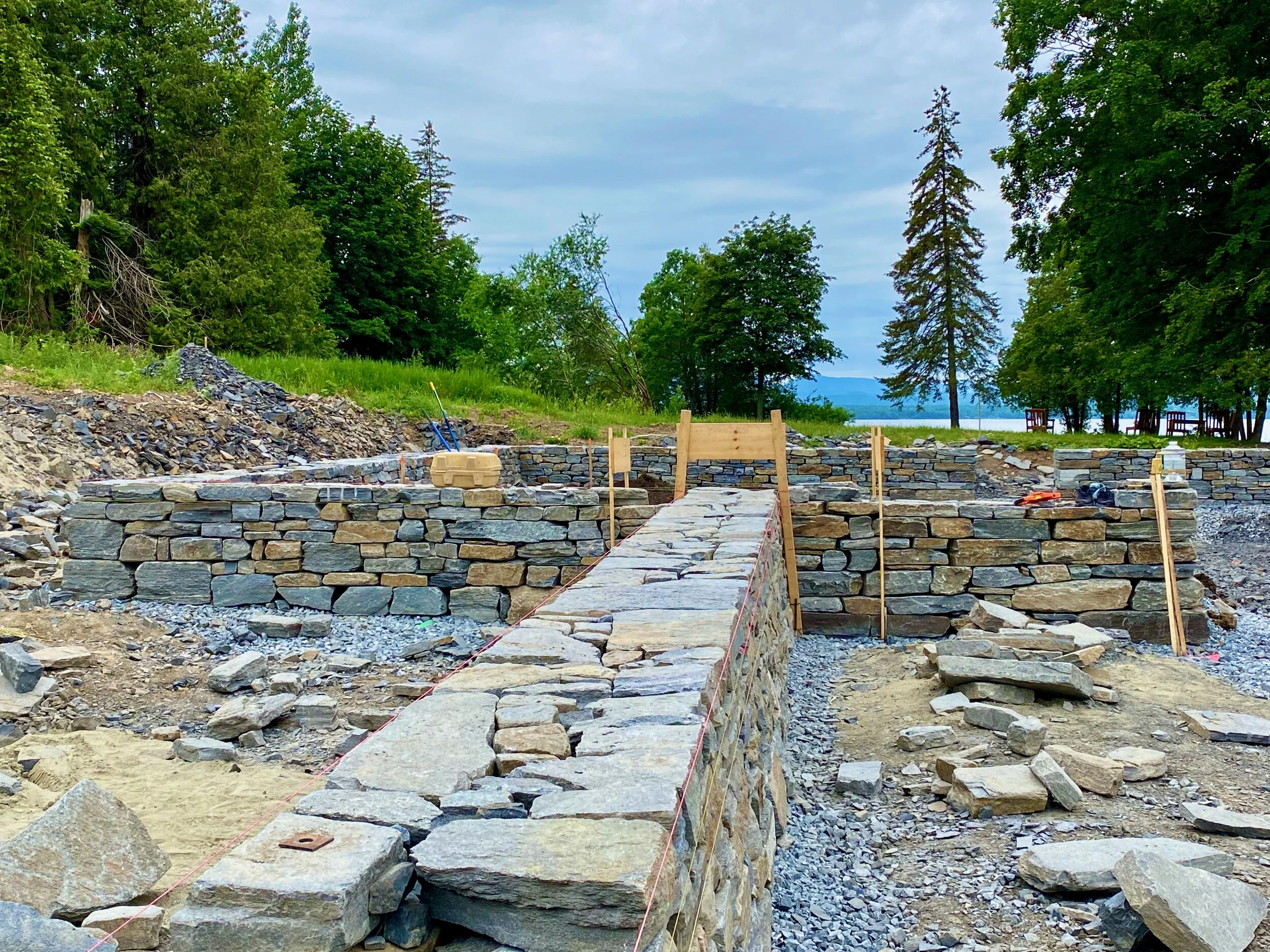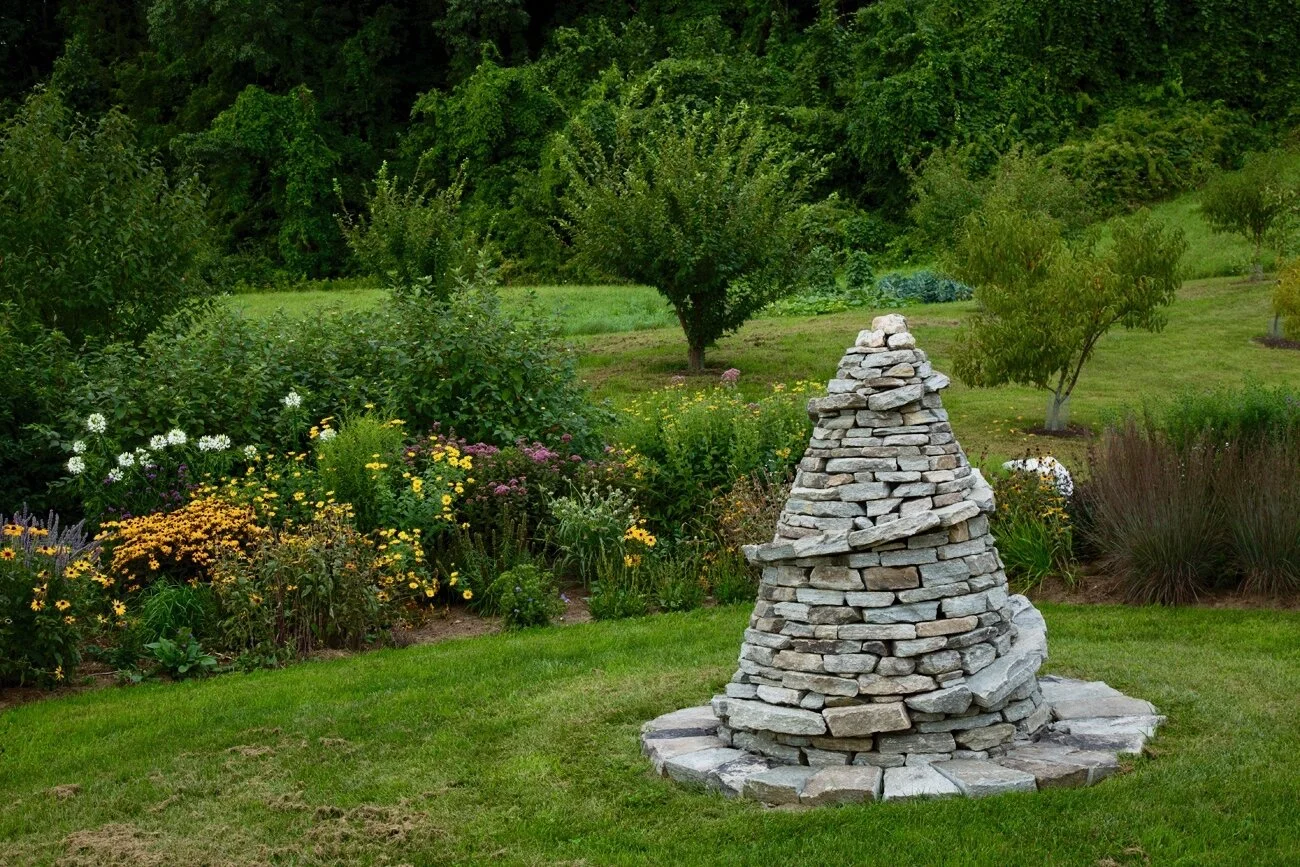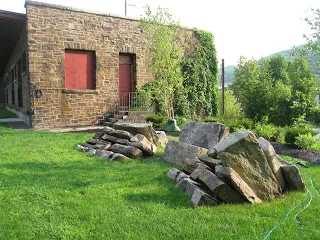Readers may well wonder “What’d it take?” when viewing images of the sunken garden space and surrounding hardscape I built last fall in Marlboro, Vermont. It was work done with skill, efficiency and pride, by me and a handful of compatriots. As with other stone endeavors, it required the marshaling of materials, equipment and craft.
Read MoreEvery project has the treasure of time locked inside. The key to spending it wisely is to embrace the unknowns. Seek out and dwell on every moment’s mystery and the day’s toil will pass in a flash.
Read MoreI was invited to talk to the assembled guests about the built landscape. We led the group through the lush gardens, pausing to tell stories and answer questions. Any puzzlement on the faces of the visitors was completely understandable. Half of what we described was fiction; a historical ruse amplified by the very real existence of the dry stone curiosities I constructed there.
Read MoreBy expanding my repertoire to include other skilled practitioners of the craft I can now see how there’s nothing lost and much to be gained. The satisfaction of successfully completing a piece is shared by all, without any one having to do it all.
Read MoreSince I’ve only been on the receiving end of interview questions I don’t know how they’re properly crafted but I can tell when they have been. A good interviewer opens a door and asks the subject to step into their own world. I was pleased to be asked by Tom Christopher to be interviewed for his podcast Growing Greener.
The most enjoyable takeaway from examining a wall that has remained true is a validation of the beliefs held while bringing it into being. Dry stone walling is about action in the moment but the results take a while to be proven out. The labor of building is lightened by seeing how honest effort ultimately endures.
Read MoreBasically, wallers are spare-parts jobbers. The loose pieces of indigenous stone they collect and parcel out are really nothing more than the duft of earth’s crowning mantle. In rare cases, bedrock, stone’s “birthmother”, is present on a building site and can come into play as a defining element of a dry stone design.
Read MoreUpon completion, the Bauble perched on its temporary base in the sugarhouse woodshed for three months while the adhesive that held it together cured.
Read MoreWhen they bought the old farmhouse in the early eighties the town road passed within eight feet of the front door. Robin and David Key were willing to overlook that serious drawback because they were in love with the ancient apple trees, the gurgling brook and the wealth of wildlife on the property. All of that was outside the back door just beyond a precipitous drop in the landscape. The retaining wall I would soon build to create a level backyard was the first in a series of dry stone projects we took on together over the following thirty years.
Read MoreA fourth generation of the Key family has begun to ramble Winhall Hollow. Pond and stream, woods and fields, are the wider setting for their active home and garden life. Into the mix comes long-time friend and dry stone specialist, Dan Snow. He has constructed numerous stone features on the grounds around their house and barns. Stone from the property has been used to fashion steps, patios, retaining walls and fences. Robin Key’s landscape design has seamlessly woven a contemporary aesthetic into the historic fabric of the Hollow.
Read MoreEven without the silhouette of a crosswalking pedestrian or leaping deer, road signs with a triangular outline convey a message of caution; warning the traveler to be aware of what lies ahead. The sharp angles draw attention because they represent sudden change. Survival of the human species has depended on the ability of individuals to recognize signs of change and to adapt quickly to new situations.
Read MoreExcavation of the hillside spring revealed layers of geologic stratification. Top soil lay on coarse gravel over pure sand on top of clay hardpan. The design called for ground water that trickled out of the sand layer to be trapped in a hollow under a half-shell overhang. Recycled slate from building foundation ruins and cobbles from a gravel pit were combined to shape the dry stone installation.
Read MoreThere are steps along the way to completing a project that deserve celebration. Yesterday the north wall of the “pumpkin seed” garden fence was topped out at its eight foot height. While clambering around on ladders and icy boulders is exhilarating in its own way, I’m glad to be finished with this stage of the work. Left to do on the fence is the final course of coping stones and filling in the break in the wall line that’s been used for loader access to the garden’s interior.
Read MoreIn the beginning the idea was to make it a solitary object out in the field north of the garden. I had visions of a compost carousel with four pie-shaped stalls. Then it was a long barrow-shaped affair with tractor ramps to the top of the bins. I knew little about composting but I was having lots of fun with modeling clay imagining the construction of a dry stone Ruminator. Scale model making is an enjoyable pursuit that helps develop spatial acuity. The process of shaping clay is slow enough for deliberation to take place and fast enough for a form to observably emerge. Results unfold in an organic fashion.
Read MoreThe autumn 2014 issue of Garden Design magazine is a beauty to behold. In its newly re-conceived subscription-only, advertisement-free format, the magazine is like a coffee table book with sumptuous photographs on every page. My thanks go out to the Garden Design staff for including my work alongside that of many talented artisans, to Lindsey for a clear and compelling article, and to Gemma and Andy for the truly splendid photography.
Read MoreContinuing on the subject of sculpture gardens, here’s a nice example I saw yesterday outside the Art Museum in Lillehammer, Norway. Created in 1992 by Bard Breivik, the sculptured garden is a cascade of stone and water. It begins serenely on flat ground at the height of the space. There, a screen of vertical granite slabs encloses a dry courtyard, a green lawn is bisected by a flagstone path, and the water course begins by spilling from a granite monolith into a long, stone trough. The water descends in multiple streams through a series of channels to a reflecting pool at the bottom of a steep rockery. Breivik’s sculptured garden is a good example of art that interprets nature without imitating it.
Read MoreDuring my working life I’ve shifted freely, back and forth, from artist to dry stone waller. Whatever the final outcome of any work, it’s been the making that I’ve liked the best. With ‘Rock Rest’, I enjoyed the creative process so much that I built the piece twice; once in my Dummerston stone yard and once here beside the museum. The stone was initially collected from a steep slope on a wooded property in Townshend. It lay there for twelve thousand years after being plucked from the ledges by the last ice age. In ‘Rock Rest’ I’ve attempted to simulate the natural process that turns bedrock into loose stone. I’ve always been fascinated by the way stones separate from one another but lock more tightly together as they slide apart.
Read MoreThe techniques used to set stones in relation to one another can be varied. The sizes and shapes of the stones in any supply are often the final determining factor in the design of a dry stone structure. The supply limits the possibilities, focusing the process of design on what is doable. Limits actually increase the potential for a successful outcome. By first assessing the qualities of the available stone, a more ornamental or contemporary design might be considered and pursued.
Read More
















